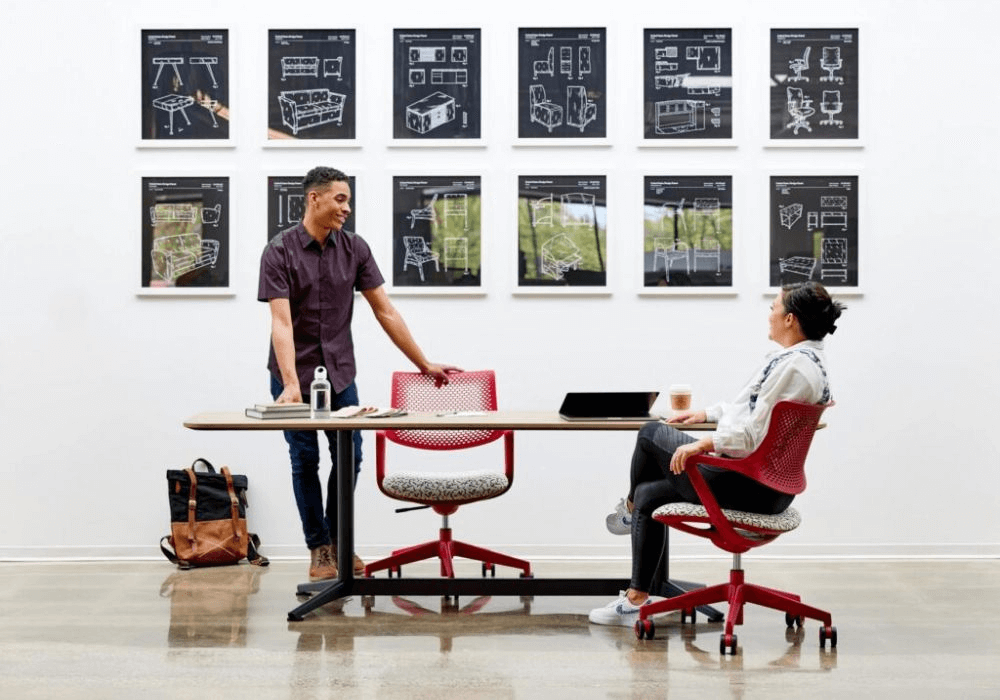Back pain is one of the most common workplace complaints, and your office chair could be a major contributor. Whether you work from home or in a corporate setting, investing in the right chair can significantly improve your comfort, posture, and productivity.
Is Sitting in an Office Chair Bad for Your Back?
Extended sitting, especially in poorly designed chairs, can cause discomfort or worsen pain. Sitting for a long time puts pressure on the spine, tightens the hip flexors, and reduces the strength of core muscles. The answer is not just standing, but switching between sitting and standing, taking breaks, and using a chair that fits your posture.

The Liberty Chair is designed to deliver automatic lumbar support that adapts to every user’s posture.
What Chairs are Good for Bad Backs?
When choosing an office chair to help with back problems, look for features that support your spine's natural alignment and allow you to adjust it throughout the day and as needed.
Here's what you should look for...
Lumbar Support
A chair with proper lumbar (lower back) support helps maintain the natural curve of your spine, essential for reducing strain and fatigue. For the best back support for chair office setups, look for a model that allows you to adjust the height and depth of the lumbar support to fit your unique shape.
Adjustability
Your chair should adapt to you, not the other way around. A good ergonomic chair will let you independently adjust the seat angle, backrest tilt, and seat depth (also known as seat slide). These adjustments help you find a position that supports your posture while keeping you comfortable through lengthy work sessions.
Armrests
Armrests should allow your shoulders to relax and your elbows to stay close to your body. If they’re too high or too low, they can cause unnecessary tension in your upper back and neck. Chairs with armrests that can be adjusted in height and sometimes width offer better support and flexibility.
Backrest Material & Seat Comfort
Comfort matters. Look for a high-density or moulded foam chair that offers support without flattening over time. Softer isn’t always better; you want supportive cushioning that relieves pressure points and promotes better circulation.
Reclining Features
If you work from the office or at home, a reclining feature is essential for ensuring physical activity throughout the day. A reclining chair allows you to move around, decrease pressure on your spine, and set a comfortable angle supporting your lower back. The best office chairs for lower back pain come with adjustable tilt tension and locking devices, which give you more options and help support your posture.

Add a pop of colour and all-day comfort to your workspace with the Dream Chair.
4 Considerations for Specific Injuries
Certain back conditions and injuries may require more specialised support:
- Which chair is best for a herniated disc?
A chair with a high backrest, strong lumbar support, and independent tilt controls can help reduce pressure on the spine. - What kind of chair is best for sciatica?
Look for a chair with a forward-tilting seat option and pressure-relieving foam to reduce compression on the lower spine and legs. - What is the best office chair for chronic pain or post-surgery?
A fully ergonomic chair with a wide range of adjustments allows for small position changes throughout the day, which is key to managing discomfort. - What office chair is best for tailbone pain?
Sometimes, a coccyx cut-out or memory foam cushion seat may be recommended to relieve pressure on sensitive areas.
Additional Tips for Back Pain Relief at Work
- Stand, stretch, and walk every 20–30 minutes.
- Maintain Correct Posture by keeping your feet flat on the floor and your knees at a 90-degree angle.
- If your back pain persists, seek a professional's opinion, such as an ergonomicist, physiotherapist, or chiropractor.
Trust the Experts
At Modern Office, we offer a curated range of ergonomic chairs designed for spinal health and everyday comfort. Whether you're managing a specific condition or looking for reliable back support during your workday, our team is here to help.
Explore our ergonomic office chair collection, or book a free consultation with our commercial furniture specialists.

